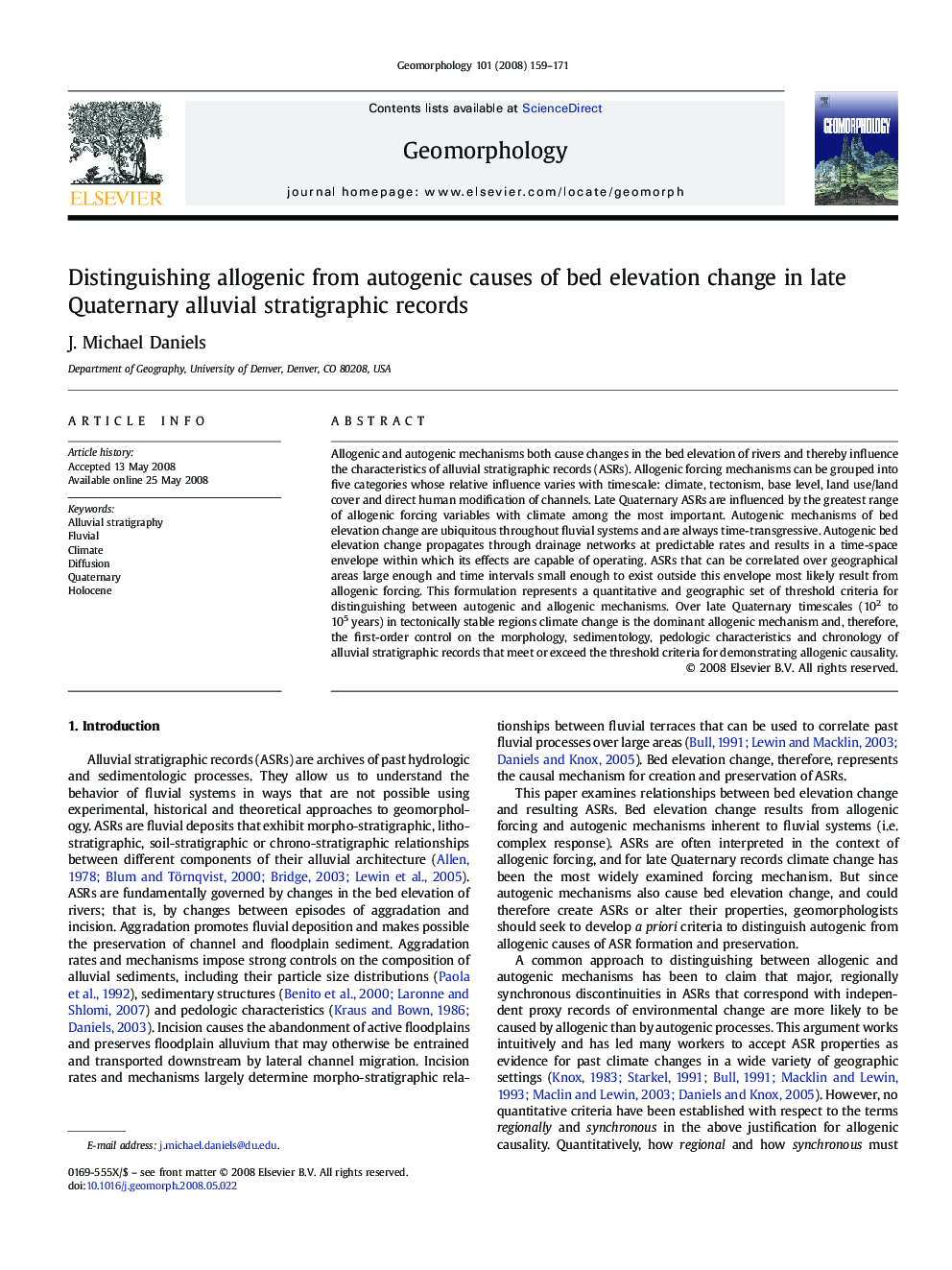| Article ID | Journal | Published Year | Pages | File Type |
|---|---|---|---|---|
| 4687001 | Geomorphology | 2008 | 13 Pages |
Allogenic and autogenic mechanisms both cause changes in the bed elevation of rivers and thereby influence the characteristics of alluvial stratigraphic records (ASRs). Allogenic forcing mechanisms can be grouped into five categories whose relative influence varies with timescale: climate, tectonism, base level, land use/land cover and direct human modification of channels. Late Quaternary ASRs are influenced by the greatest range of allogenic forcing variables with climate among the most important. Autogenic mechanisms of bed elevation change are ubiquitous throughout fluvial systems and are always time-transgressive. Autogenic bed elevation change propagates through drainage networks at predictable rates and results in a time-space envelope within which its effects are capable of operating. ASRs that can be correlated over geographical areas large enough and time intervals small enough to exist outside this envelope most likely result from allogenic forcing. This formulation represents a quantitative and geographic set of threshold criteria for distinguishing between autogenic and allogenic mechanisms. Over late Quaternary timescales (102 to 105 years) in tectonically stable regions climate change is the dominant allogenic mechanism and, therefore, the first-order control on the morphology, sedimentology, pedologic characteristics and chronology of alluvial stratigraphic records that meet or exceed the threshold criteria for demonstrating allogenic causality.
